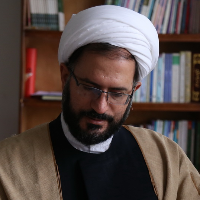Recognition of the Communicative Elements of Ashura and Their Implicit Connotations
The Ashura event, due to its immense significance and impact, has been analyzed from various perspectives. It may be argued that few events in the world, particularly in the Islamic world, have had cultural penetration comparable to that of Ashura, deeply influencing the psyche of free-spirited individuals. Thus, this phenomenon is unique from a communicative perspective and contains numerous mysteries awaiting discovery. However, despite its importance and influence, it has been rarely examined from a communicative standpoint. Accordingly, the present study aims to identify the communicative elements of Ashura, particularly their embedded meanings, inspired by a semiotic approach, exploring their explicit and implicit connotations. The results indicate that Imam Ḥusayn (peace be upon him), acknowledging the lack of apparent victory, aimed for a "soft victory" and the revival of the Sunna of the Messenger of Allah (peace be upon him). The elements and components of Ashura, such as "utilization of sacred time and space," "deconstruction and presentation of a manifesto," "selection of a familiar destination," "symbolic use of feminine decorum," "utilization of poetry," "symbolization of water," "production of aphorisms and conceptual dichotomies," and "symbolization of tears," each possess unique implicit connotations. Understanding these connotations not only elucidates the logic behind these elements for contemporary audiences but also reveals their implicit messages. Collectively, these components signify an overarching implicit connotation: the revival of the religion of Muhammad (peace be upon him) and the delineation of a path of guidance for the free-spirited individuals of the world, particularly the Ummah of Muhammad (peace be upon him), in all ages and eras.
-
A historical study of the educational and Propagating methods of Islam from the Mogul invasion to the rise of the Safavids (656-907 AH): with emphasis on the Shiite religion
Karim Khanmohammadi *, Tahereh Mashalpoor
Religion & Communication, -
A Semiotic Analysis of Ghadir as a Sacred time from the Perspective of Imam Reza (A.S.)
Karim Khanmohammadi *
Journal of Razavi Culture,


